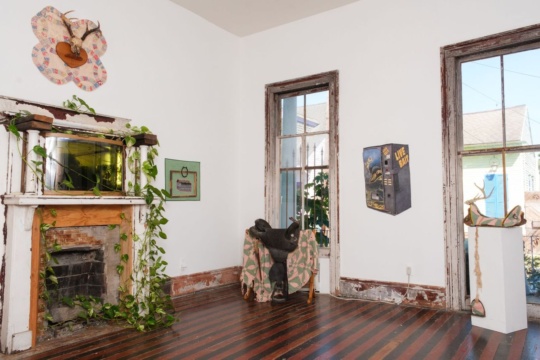
“Racial solidarity was expressed in the language of kinship because it both evidenced the wound and attempted to heal it. The slave and the ex-slave wanted what had been severed: kin. Those in the diaspora translated the story of race into one of love and betrayal.”
Saidiya Hartman, Lose Your Mother
Mending the Sky at the New Orleans Museum of Art takes its title from Chinese mythology and the legend of Mother Goddess, Nüwa, who repairs a rip in the heavens and abates the flood of waters, strife, famine and disease upon humanity. Inspired also by the work of the same title by Chinese artist Beili Liu, the exhibition brings together the projects of eleven artists responding to a world, like its ancient parallel, in total crisis. At the start of the exhibition’s run to the present, the global community remains firmly in the grip of the COVID pandemic with the United States its epicenter. Parallel to the plague, the country is also living with the consequences of deadly racist violence and a presidential election that before its ultimate conclusion, culminated in an attempted insurrection. As such, the myth as metaphor for the exhibited works takes on added significance calling for both engagement and scrutiny in a city like New Orleans.
The blur of last summer in the United States was death, protests, tear gas, projectiles and also a series of open letters and boycotts by the current and former employees of art institutions across the country. The challenges to the way museums have traditionally interacted with the architecture of cultural memory, included one to the New Orleans Museum of Art. In June the group, DismantleNOMA released an open letter accusing the museum of discriminatory hiring practices and creating a hostile environment for Black employees and visitors. In their series of two open letters, organizers from DismantleNOMA called for living wages, investigations on the origins of African and indigenous art in collection, the dismantling of the museum’s current leadership and a restructuring of the board to accommodate more racial diversity. In addition to the demands made of the institution, one letter also addresses the community of art workers and artists, calling for them to “to place strict conditions on their collaboration with NOMA—to starve it of creative labor, time, energy, membership, admissions fees, etc., until all of #DismantleNOMA’s demands are met in full.”
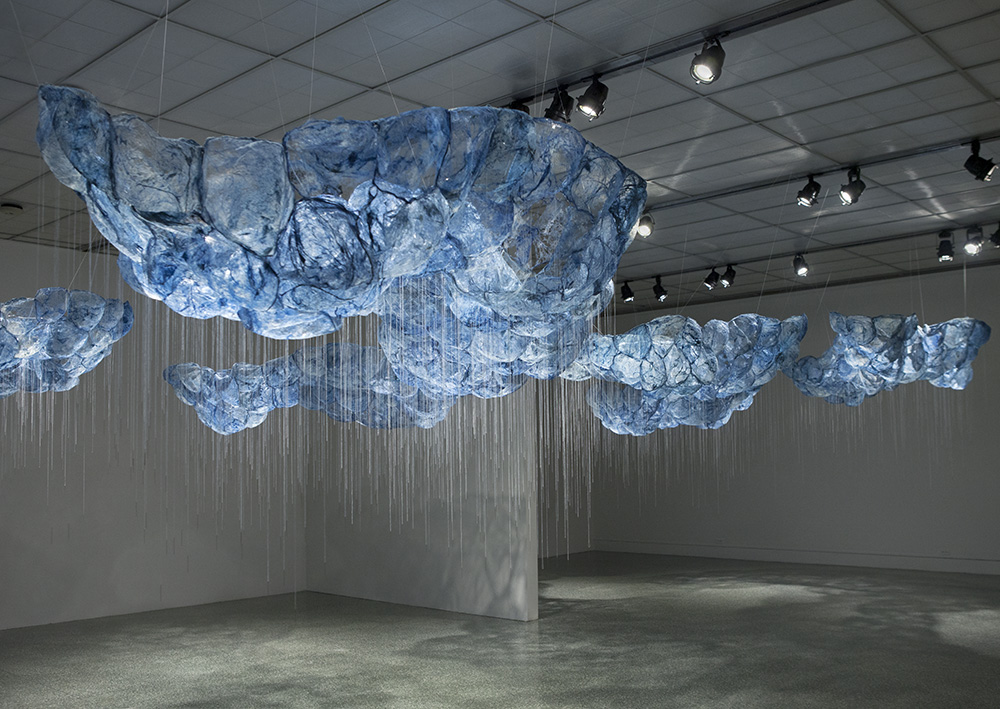
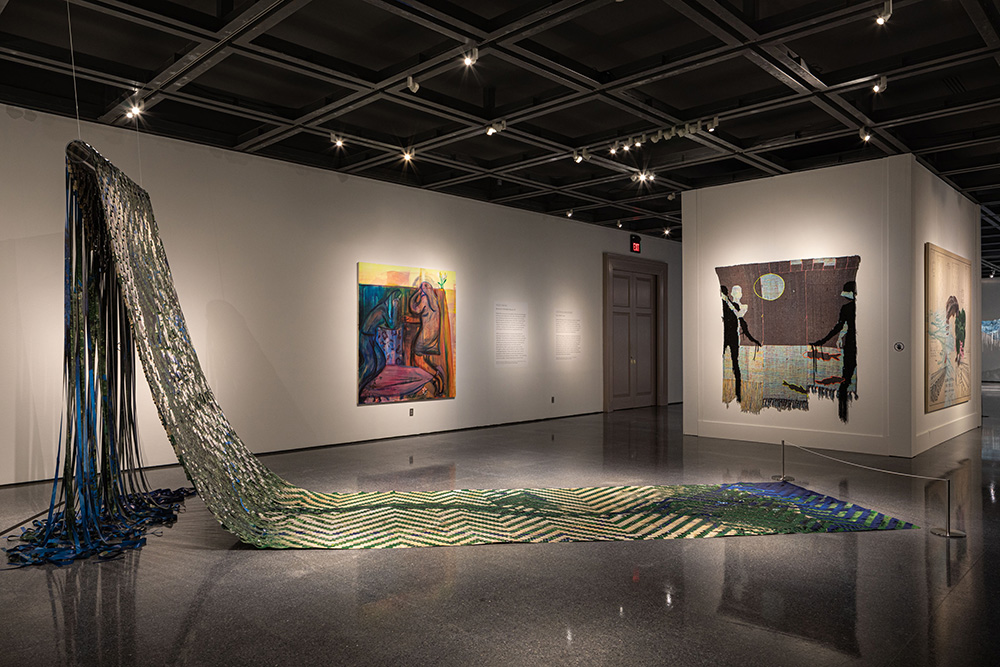
In the Chinese myth, Nuwa (Queen Wa) smelts together five precious stones along with reeds and cinder to fill the gaping sky. Liu’s voluminous cyanotypes on silk feature hundreds of hanging threads each with a needle at its end. Every one a stroke of the goddess, representative of the attempts made by women to correct a calamitous world via the strength and consistency of domestic work. In the legend water pours in through hole in the heavens flooding the earth with all that it carries forth. Clarissa Tossin’s, Encontro das Aguas evokes these waters with the surrounding works in the exhibition each serving as one of Queen Wa’s stones, a reed, a cinder offered to plug the onslaught. Econtro das Aguas as an installation refers back to the Brazilian port city of Manaus and it as a confluence point for the Negro and Upper Amazon rivers. Once the center of the British rubber boom the city now hosts mega manufacturers like Apple, Sony, and Coca Cola. The woven vinyl print juxtaposes indigenous weaving patterns with symbols of globalization calling attention to both the precarity of the people and environment in Brazil. Alongside the economic legacy of the trade in rubber is the entanglement of enslavement and freedom for indigenous natives and Africans. Ana Hernandez’ A Sense of Memory grapples with the legacy and fate of indigeneity in the Americas both conceptually and materially. The lone figurine of a human brain appears fossilized, or preserved like a taxidermied butterfly inside of its stained wood casing– a brain in the enclosure of the museum, also enclosed by the memory of its journey–memory that cannot be contained or erased. Memory instead continuously finding itself in its descendants–continually finding itself enmeshed and enraged, pushing back against the limitations of the present.
Arising out of the study of cult behavior, cognitive dissonance is the state of mental emotional discomfort resulting from possessing conflicting attitudes, beliefs or behaviors and the drive to alter or eliminate one or more of the attitudes, beliefs or behaviors to restore mental comfort. Throughout the course of the summer, I wrestled with, and continue to, with the ways the various mechanisms of racial capitalisms and even our understood forms of organized resistance feed and fix the artist, the art worker and the consumer into permanent states of dissonance. A proverbial hole in the psyche. Art workers who might be working to dismantle one institution might also choose to work with another, which in the social political history of New Orleans, are none exempt from racist and exclusionary practices. By this same logic artists whose work calls into question the established order may also, in the current cultural economy, choose to be exhibited in an institution whose best practices or lack thereof are being publicly protested. None of this is exactly comfortable, but is the landscape under which we live.
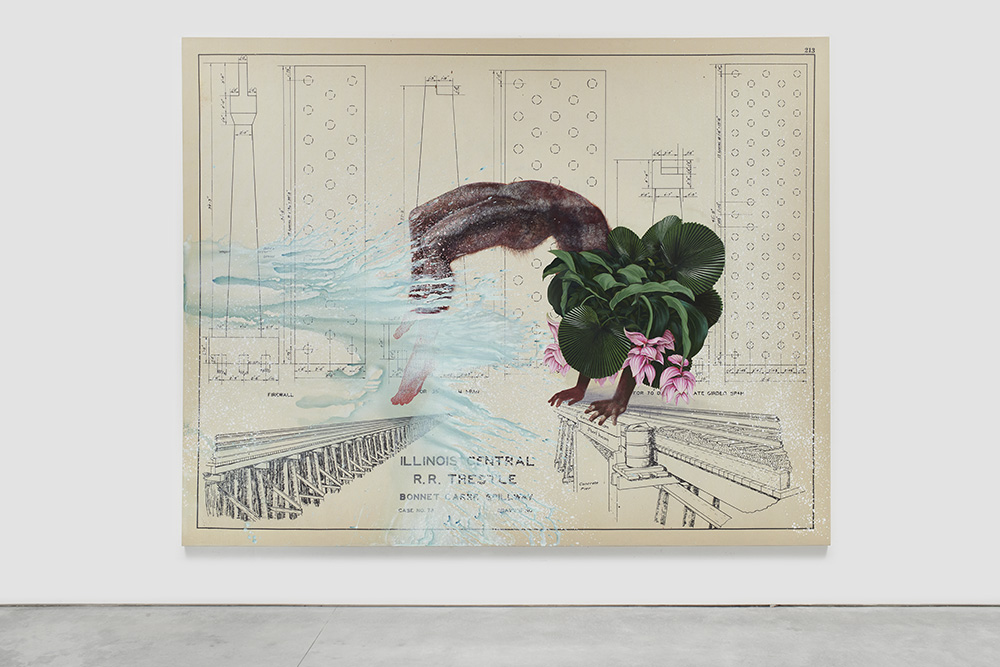
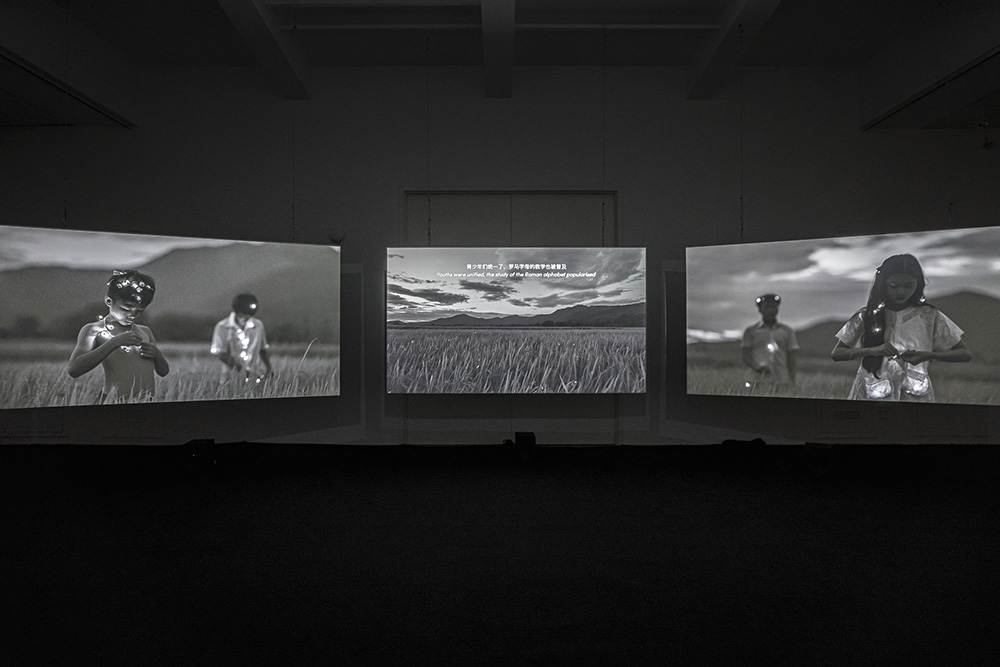
Thao Nguyen Phan’s Mute Grain, a three channel film about famine in Japanese occupied Vietnam calls forth the ghosts of empire. The more than two million casualties of war driven food insecurity ,whose memory has been obscured to almost non-existence in American retellings of WWII, is brought to life by the ghost character of August. Unable to transition from life to death, August haunts the living in their leanest times. In the lacerating opening chapters of Saidiya Hartman’s Lose Your Mother, she asserts that her lineage binds her as an attendant of the dead. It is for their memory that she travels to Ghana—it is the dissonance of a life so animated by death that propels one to approach the search for what can’t be found as duty. Jamilah Sabur’s, un chemin escarpe/a steep path, a five channel installation, the use of the rhombus shape, a convention in Caribbean architecture, also acts as a meditation on memory. Drawing from the environment of both she and her mother’s childhoods, the shape as motif, acts as an anchor through the blur of color and multiplicity of settings present in the installation. What such shape holds together a show of strong works presented in the ordered chaos of our society’s “civilizing” institutions? Are the works presented an attempt to mend a fissure or the ultimate representative of its existence?
Mending the Sky is on view at the New Orleans Museum of Art through January 31, 2020.


